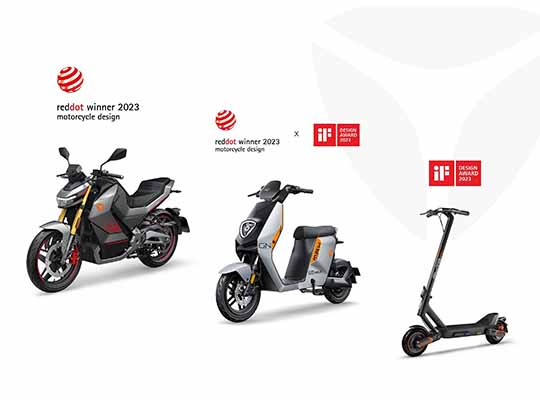The solar panels market is estimated to grow by USD 50.08 billion from 2022 to 2027. The growth momentum will progress at a CAGR of 7.87% during the forecast period. The market is segmented by end-user (power utilities, commercial, and residential), type (crystalline panel and thin-film panel), and geography (APAC, Europe, North America, Middle East and Africa, and South America). The market share growth by the power utilities segment will be significant for overall market growth during the forecast period. The power utility sector held the largest share of the global solar panel market in 2022. The installation of large-scale solar power plants to generate clean energy and reduce carbon emissions is increasing, which has a positive influence on segment growth. The increasing investments in the renewable energy sector significantly drive the market growth. There has been a significant shift in the world’s energy mix, over the past two decades. The IEA estimates that the proportion of renewable energy in the world’s electricity generation rose from 26% in the first quarter of 2020 to about 28% in the first quarter of 2021 and by 2023, it’s anticipated to reach 30%. As compared to more conventional energy sources like fossil fuels, such as nuclear power, producing electricity from renewable sources is relatively expensive. Hence, such factors drive the market growth during the forecast period.
Solar Panels Market Insights –
- Vendors: 15+, Including Adani Group, Antec Solar GmbH, Canadian Solar Inc., First Solar Inc., Flisom AG, Hanergy Thin Film Power Group Ltd., JA Solar Technology Co. Ltd., Jiangsu Zhongli Group Co. Ltd., JinkoSolar Holding Co. Ltd., Kaneka Corp., Longi green energy technology Co. Ltd, Risen Energy Co. Ltd., Shell plc, SoloPower Systems Inc., Soltecture GmbH, Tata Power Co. Ltd., Tesla Inc., Trina Solar Co. Ltd., Wuxi Suntech Power Co. Ltd., and Yingli Green Energy Holding Co. Ltd., among others
- Coverage: Parent market analysis; key drivers, major trends, and challenges; customer and vendor landscape; vendor product insights and recent developments; key vendors; and market positioning of vendors
- Segments: End-user (Power utilities, Commercial, and Residential), Type (Crystalline panel and Thin-film panel), and Geography (APAC, Europe, North America, Middle East and Africa, and South America)
Solar panels market – Vendor Insights
The growing competition in the market is compelling vendors to adopt various growth strategies such as promotional activities and spending on advertisements to improve the visibility of their services. Technavio report analyzes the market’s competitive landscape and offers information on several market vendors including Adani Group, Antec Solar GmbH, Canadian Solar Inc., First Solar Inc., Flisom AG, Hanergy Thin Film Power Group Ltd., JA Solar Technology Co. Ltd., Jiangsu Zhongli Group Co. Ltd., JinkoSolar Holding Co. Ltd., Kaneka Corp., Longi green energy technology Co. Ltd, Risen Energy Co. Ltd., Shell plc, SoloPower Systems Inc., Soltecture GmbH, Tata Power Co. Ltd., Tesla Inc., Trina Solar Co. Ltd., Wuxi Suntech Power Co. Ltd., and Yingli Green Energy Holding Co. Ltd.
Solar Panels Market – Market Dynamics
Major Trends –
- The rise in the deployment of microgrids is an emerging trend in the solar panels market.
- A small-scale power grid with its own sources of generation and storage is known as a microgrid and can run on its own or in cooperation with other tiny power grids.
- To operate in both grid-connected and island modes, a microgrid can connect to and disconnect from the power grid.
- As the primary power grid experiences a failure or if the system is purposefully disconnected from the primary grid, a microgrid may go into island mode. Microgrids are used in villages where access to grid-connected power is difficult or scarce.
- As they are unaffected by power outages in the main grid, they are more dependable and also lower the price of expanding the grid to outlying areas.
- Hence, such trends influence the growth of the solar panels market during the forecast period.
Key challenges –
- High initial investment and maintenance costs for solar PV systems are major challenges hindering market growth.
- In spite of the fact that the cost of the materials has significantly decreased, solar PV installations still require a significant upfront investment and the main cause of the higher investment rates is the need for a large area for panels to produce a lot of electricity.
- Because of the intermittency issues, which reduce solar panels’ efficiency, customers must install a lot of solar panels to meet their energy needs. It raises both the initial investment and ongoing maintenance costs.
- Hence, such factors will hinder the growth of the global market during the forecast period.
The solar panels market report provides critical information and factual data, with a qualitative and quantitative study of the market based on market drivers and limitations as well as future prospects.
Why Buy?
- Add credibility to strategy
- Analyzes competitor’s offerings
- Get a holistic view of the market
What are the key data covered in this Solar Panels Market report?
- CAGR of the market during the forecast period
- Detailed information on factors that will drive the growth of the solar panels market between 2023 and 2027
- Precise estimation of the size of the solar panels market and its contribution to the market with a focus on the parent market
- Accurate predictions about upcoming trends and changes in consumer behavior
- Growth of the solar panels market across APAC, Europe, North America, Middle East and Africa, and South America
- A thorough analysis of the market’s competitive landscape and detailed information about vendors
- Comprehensive analysis of factors that will challenge the growth of the solar panels market vendors













